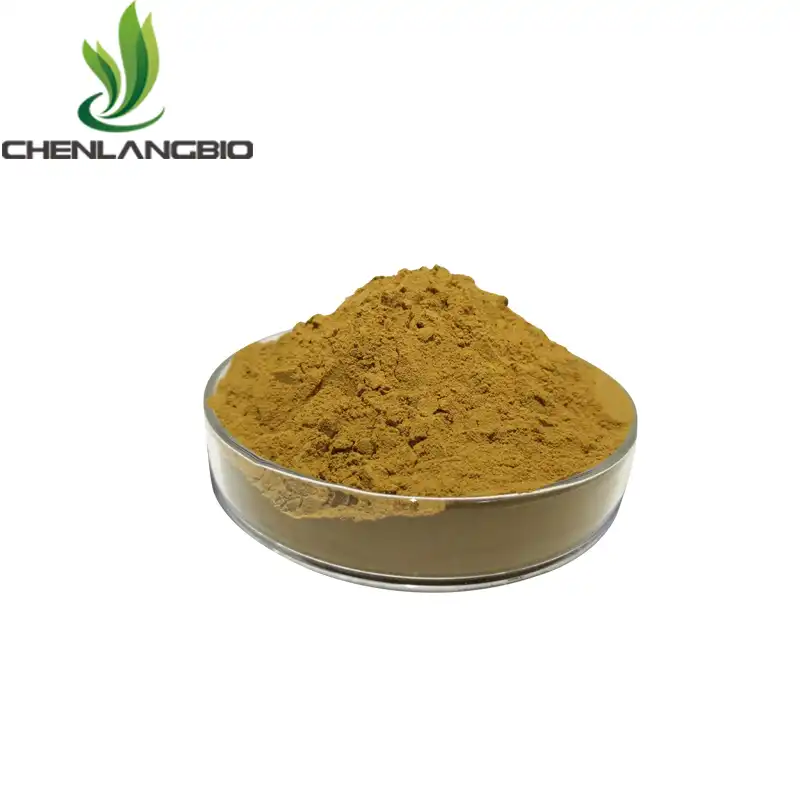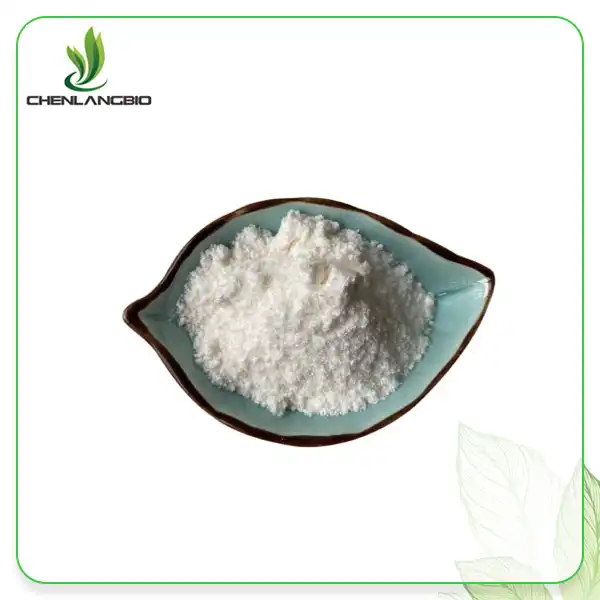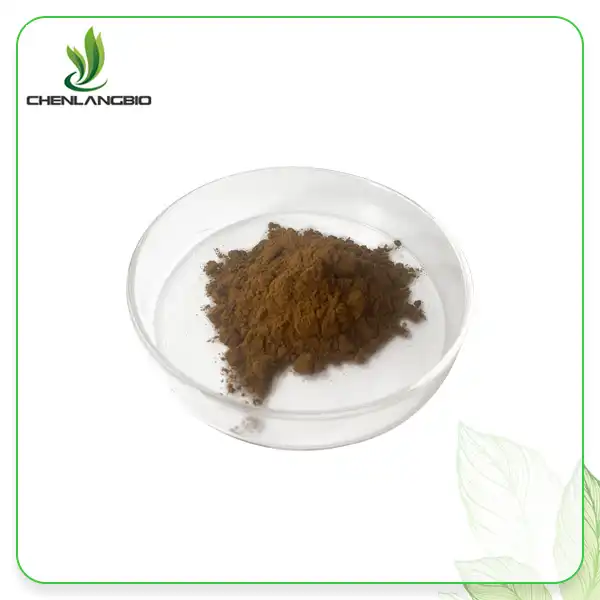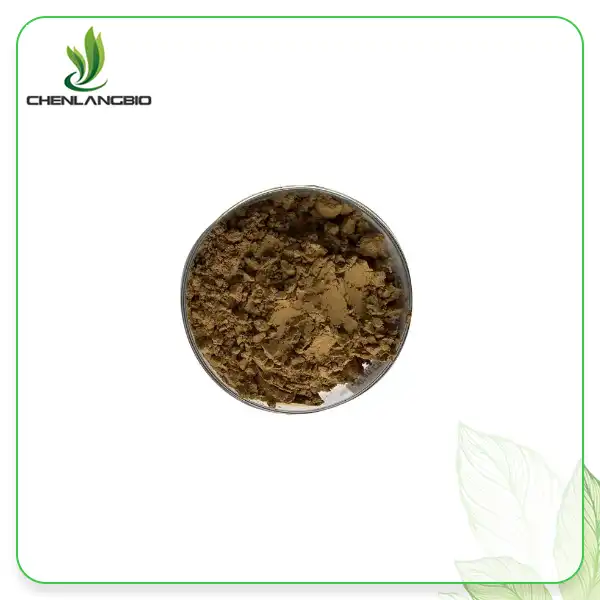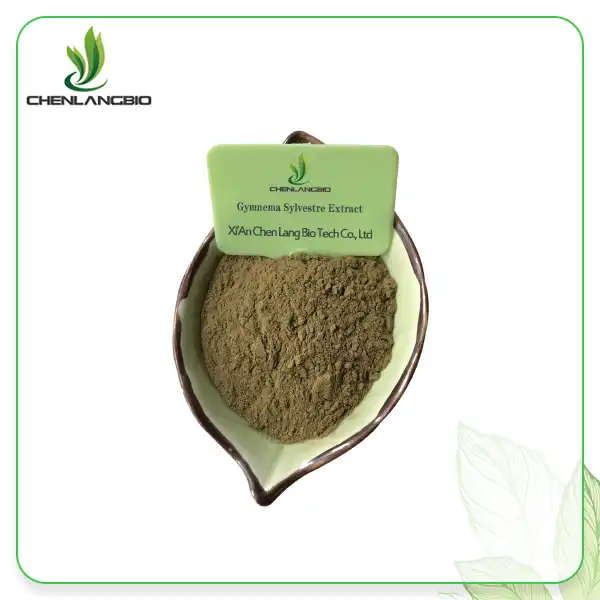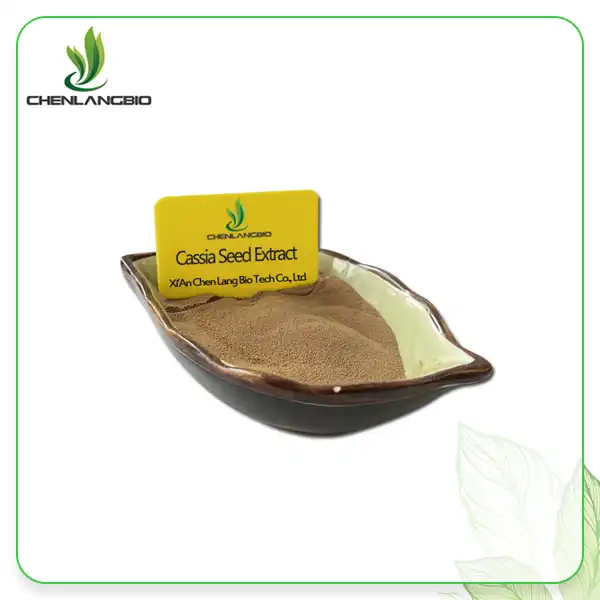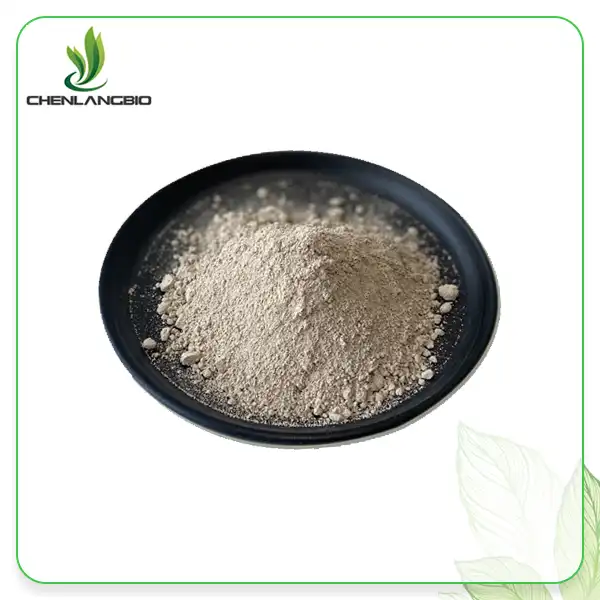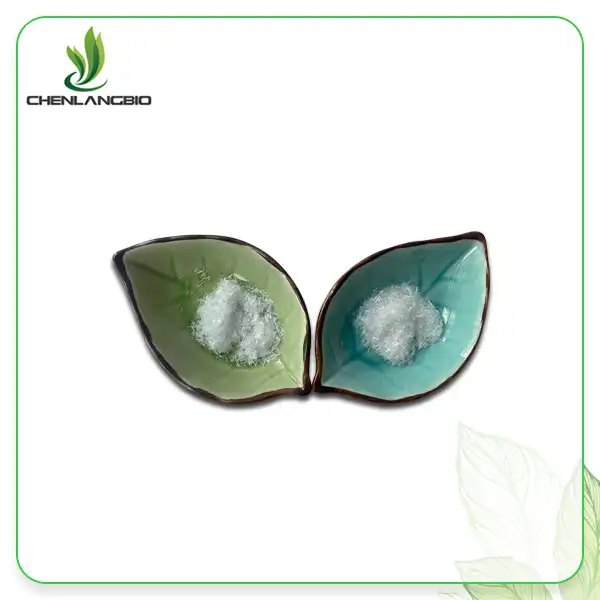What is the Solubility of D-Luciferin Sodium Salt?
2025-04-16 09:36:02
Understanding the solubility properties of D-Luciferin Sodium Salt is crucial for researchers working in bioluminescence studies, drug discovery, and various biotechnology applications. This comprehensive guide explores the solubility profile of this important compound and provides valuable insights for optimal usage in research and industrial settings.
D-Luciferin Sodium Salt, a water-soluble derivative of D-Luciferin, exhibits excellent solubility in various solvents. As the sodium salt form of D-Luciferin, it demonstrates significantly enhanced solubility in aqueous solutions compared to its free acid counterpart. This compound dissolves readily in water at a concentration of 10 mg/ml, making it an ideal choice for biological assays and in vivo imaging applications where aqueous compatibility is essential. Additionally, D-Luciferin Sodium Salt shows good solubility in DMSO (10 mg/ml), DMF (16.7 mg/ml), and limited solubility in ethyl alcohol (0.25 mg/ml), offering flexibility for different experimental requirements.
Solubility Characteristics of D-Luciferin Sodium Salt
Chemical Properties Affecting Solubility
The solubility of D-Luciferin Sodium Salt is directly influenced by its unique chemical structure and properties. This compound, with the molecular formula C₁₁H₇N₂NaO₃S₂ and molecular weight of 302.30, is a thiazole heterocyclic compound that contains both hydrophilic and hydrophobic regions. The sodium salt formation significantly alters the solubility profile compared to free D-Luciferin. The replacement of the acidic proton with a sodium ion creates an ionic compound that interacts favorably with polar solvents, particularly water. The presence of sulfur atoms in the thiazole and thiazoline rings, along with the carboxylate group, contributes to its solubility behavior across various solvents. These structural features allow D-Luciferin Sodium Salt to maintain stability in solution while preserving its bioluminescent properties for various applications. When working with D-Luciferin Sodium Salt, understanding these chemical properties is essential for proper handling and optimal experimental outcomes, especially in sensitive bioluminescence detection systems where substrate concentration directly impacts signal intensity and assay performance.
Solubility in Different Solvents
The versatility of D-Luciferin Sodium Salt is demonstrated by its varied solubility profile across different solvents. In water, D-Luciferin Sodium Salt achieves solubility of 10 mg/ml, making it highly suitable for biological applications where physiological compatibility is required. For in vivo imaging applications, its excellent water solubility enables efficient delivery to target tissues with minimal formulation challenges. When working with phosphate-buffered saline (PBS) at pH 7.2, D-Luciferin Sodium Salt maintains its 10 mg/ml solubility, providing consistency in physiologically relevant conditions. For researchers requiring alternative solvent systems, D-Luciferin Sodium Salt offers good solubility in dimethyl sulfoxide (DMSO) at 10 mg/ml and exceptional solubility in dimethylformamide (DMF) at 16.7 mg/ml. These organic solvent options are particularly valuable for specialized applications or when creating concentrated stock solutions. Interestingly, D-Luciferin Sodium Salt exhibits limited solubility in ethyl alcohol at only 0.25 mg/ml, which may affect formulation strategies when alcoholic solutions are preferred. These solubility characteristics should be carefully considered when designing experimental protocols using D-Luciferin Sodium Salt to ensure optimal performance across various research applications and analytical techniques.
Temperature and pH Effects on Solubility
The solubility of D-Luciferin Sodium Salt demonstrates notable dependency on both temperature and pH conditions, factors that researchers must carefully consider when designing experiments. At standard laboratory temperatures (20-25°C), D-Luciferin Sodium Salt maintains its established solubility profile in various solvents. However, solubility generally increases with temperature, which can be advantageous when preparing concentrated stock solutions. When working with D-Luciferin Sodium Salt, it's important to note that extreme temperature fluctuations should be avoided as they may impact not only solubility but also compound stability. The pH environment significantly influences the solubility and stability of D-Luciferin Sodium Salt, with optimal solubility observed in neutral to slightly alkaline conditions (pH 7.0-8.0). This pH range facilitates the formation of the soluble sodium salt form while preserving the functional integrity of the molecule. At lower pH values, protonation of the carboxylate group may occur, potentially reducing water solubility and shifting the compound toward its free acid form. For applications requiring specific pH conditions, buffer systems should be carefully selected to maintain optimal D-Luciferin Sodium Salt solubility while supporting the desired experimental conditions. Understanding these temperature and pH dependencies allows researchers to maximize the performance of D-Luciferin Sodium Salt in various applications, from in vitro assays to complex in vivo imaging studies.
Applications Requiring Specific Solubility Properties
Bioluminescence Imaging and Detection
The exceptional solubility properties of D-Luciferin Sodium Salt make it an ideal substrate for bioluminescence imaging (BLI) applications, where consistent and reliable signal generation is crucial. In BLI techniques, D-Luciferin Sodium Salt's excellent water solubility (10 mg/ml) enables efficient delivery to target tissues following administration, whether through injection, ingestion, or direct application. This high aqueous solubility facilitates rapid distribution throughout the organism in in vivo imaging studies, allowing researchers to monitor biological processes in real-time with minimal background interference. When D-Luciferin Sodium Salt encounters luciferase enzymes in the presence of ATP, it undergoes oxidation, resulting in light emission that can be precisely detected and quantified. The substrate concentration directly influences the intensity and duration of the bioluminescent signal, with higher concentrations typically yielding stronger signals up to the point of saturation. For optimal imaging outcomes, researchers often prepare fresh solutions of D-Luciferin Sodium Salt in PBS or water immediately before use, taking advantage of its excellent solubility to ensure maximum substrate availability. In advanced applications such as multiplexed imaging or longitudinal studies, the solubility characteristics of D-Luciferin Sodium Salt enable researchers to develop sophisticated protocols for monitoring disease progression, treatment response, and biological interactions with exceptional sensitivity and specificity.
Cell Viability and ATP Detection Assays
The reliable solubility profile of D-Luciferin Sodium Salt is particularly valuable in cell viability and ATP detection assays, where consistent reagent performance is essential for accurate results. In these applications, D-Luciferin Sodium Salt serves as the substrate in luciferase-based detection systems that quantify ATP levels as indicators of cellular metabolic activity and viability. The excellent water solubility of D-Luciferin Sodium Salt (10 mg/ml) ensures complete dissolution in assay buffers, facilitating uniform distribution across cell samples and preventing artifacts that might arise from precipitated substrate. When preparing reagents for high-throughput screening or routine cell viability assessment, researchers typically dissolve D-Luciferin Sodium Salt in water or appropriate buffer systems to create stock solutions that remain stable and fully solubilized during the assay procedure. The compound's solubility in DMSO (10 mg/ml) provides an alternative for creating concentrated stocks that can be diluted into aqueous buffers immediately before use, offering flexibility in assay design while maintaining compatibility with cellular systems. In complex assay formats involving multiple reagent additions or incubation steps, the stability of D-Luciferin Sodium Salt in solution ensures consistent performance throughout the experimental timeline. For quantitative applications where precise dose-response relationships are critical, such as cytotoxicity testing or drug screening, the predictable solubility characteristics of D-Luciferin Sodium Salt contribute to reliable assay performance and reproducible results across different experimental conditions and laboratory settings.
Gene Expression and Reporter Assays
The optimal solubility properties of D-Luciferin Sodium Salt play a pivotal role in the success of gene expression and reporter assays, where sensitivity and reliability are paramount. In these sophisticated molecular biology applications, luciferase reporter systems paired with D-Luciferin Sodium Salt provide powerful tools for measuring gene expression, promoter activity, and transcriptional regulation with exceptional precision. The high water solubility of D-Luciferin Sodium Salt (10 mg/ml) ensures complete substrate availability to luciferase enzymes expressed in reporter systems, maximizing signal generation and assay sensitivity. When designing dual-reporter or multiplexed gene expression studies, researchers frequently utilize the predictable solubility characteristics of D-Luciferin Sodium Salt to create standardized substrate solutions that deliver consistent performance across multiple experimental conditions. For cell-based reporter assays, the compound's cell permeability and excellent solubility in physiological buffers facilitate efficient substrate delivery to intracellular luciferases without disrupting cellular processes or introducing artifacts. In high-throughput screening applications targeting transcriptional modulators or gene expression regulators, D-Luciferin Sodium Salt's reliable solubility profile supports automated liquid handling and reagent dispensing workflows, enhancing screening efficiency and data quality. The compound's compatibility with various buffer systems and culture media compositions, attributable to its favorable solubility properties, makes it adaptable to diverse experimental designs, from transient transfection studies to stable reporter cell line development and complex co-culture systems investigating intercellular communication or tissue-specific gene regulation patterns.
Practical Handling and Storage Considerations
Optimal Storage Conditions
Maintaining the solubility and functionality of D-Luciferin Sodium Salt requires adherence to specific storage conditions that preserve its chemical integrity and bioluminescent properties. This compound is particularly sensitive to environmental factors that can accelerate degradation and compromise performance in research applications. For long-term storage, D-Luciferin Sodium Salt should be kept at -20°C or lower temperatures, preferably in a freezer designated for high-value reagents with minimal temperature fluctuations. The compound should be stored in moisture-resistant containers with airtight seals to prevent hydration that could trigger premature degradation. Light exposure represents another critical factor affecting D-Luciferin Sodium Salt stability, as photochemical reactions can diminish its luminescent capabilities over time. Consequently, storage containers should provide protection from light, with amber vials or opaque packaging materials offering an additional layer of protection against photodegradation. When handling bulk quantities of D-Luciferin Sodium Salt, such as the 1kg aluminum foil bags supplied by Xi An Chen Lang Bio Tech Co., Ltd., it's advisable to divide the material into smaller working aliquots upon receipt, minimizing repeated freeze-thaw cycles that could affect solubility and performance. For laboratory settings managing multiple research projects, implementing a dedicated inventory system with clear labeling of receipt dates, lot numbers, and expiration information helps ensure that only properly stored D-Luciferin Sodium Salt is used in critical experiments requiring optimal solubility and bioluminescent activity.
Solution Preparation Techniques
Maximizing the solubility potential of D-Luciferin Sodium Salt requires careful attention to solution preparation techniques that ensure complete dissolution while preserving biological activity. When preparing working solutions, researchers should begin with high-quality water (preferably ultrapure or molecular biology grade) or appropriate buffer systems that match the intended application's pH requirements. For standard applications requiring aqueous solutions, D-Luciferin Sodium Salt can be directly dissolved in water at concentrations up to 10 mg/ml, gently mixing until complete dissolution is achieved. Mild warming (30-37°C) may accelerate the dissolution process for concentrated solutions without compromising stability, though extended heating should be avoided. For applications requiring alternative solvents, D-Luciferin Sodium Salt can be dissolved in DMSO (10 mg/ml) or DMF (16.7 mg/ml) to create concentrated stock solutions that can be subsequently diluted into aqueous buffers. When preparing DMSO stocks, it's essential to use anhydrous solvent to prevent moisture-induced degradation and maintain solution clarity. Filtration through 0.22 μm sterile filters may be employed for applications requiring sterility, though researchers should verify recovery post-filtration to ensure accurate concentration. Freshly prepared D-Luciferin Sodium Salt solutions typically yield optimal performance, but when storage is necessary, aliquoting into single-use volumes and storing at -20°C in the dark will help preserve activity. Prior to experimental use, solutions should be brought to room temperature and gently mixed to ensure homogeneity without introducing excessive air that could accelerate oxidative degradation of this sensitive substrate.
Compatibility with Experimental Systems
The versatile solubility profile of D-Luciferin Sodium Salt enables its integration across diverse experimental platforms, though specific considerations must be addressed to ensure optimal performance in each system. In cell-based assays, the excellent water solubility (10 mg/ml) and PBS compatibility (10 mg/ml at pH 7.2) of D-Luciferin Sodium Salt facilitate direct addition to culture media with minimal disruption to cellular environments. When designing in vivo imaging protocols, researchers should consider the route of administration and resulting biodistribution patterns, which are directly influenced by the compound's solubility characteristics in physiological fluids. For intravenous administration, aqueous solutions of D-Luciferin Sodium Salt provide immediate bioavailability, while intraperitoneal or subcutaneous delivery may benefit from slightly increased concentrations to compensate for distribution barriers. In microfluidic systems or automated high-throughput platforms, the stable solubility profile of D-Luciferin Sodium Salt across various buffer compositions supports consistent flow characteristics and reliable reagent delivery, critical factors for assay reproducibility. When incorporating D-Luciferin Sodium Salt into multiplexed detection systems alongside other reagents or reporter substrates, potential interactions should be evaluated through preliminary compatibility testing to prevent precipitation or activity loss. For specialized applications requiring non-aqueous environments, such as certain drug screening platforms or microemulsion systems, the solubility of D-Luciferin Sodium Salt in DMSO (10 mg/ml) and DMF (16.7 mg/ml) offers flexibility while maintaining functional integrity. In complex experimental designs involving multiple detection modalities or varied environmental conditions, understanding the solubility limitations of D-Luciferin Sodium Salt informs appropriate control measures that preserve signal quality and experimental validity across all tested conditions.
Conclusion
The solubility properties of D-Luciferin Sodium Salt make it an exceptionally versatile substrate for bioluminescence applications. With excellent water solubility (10 mg/ml), good compatibility with common solvents, and stability under proper storage conditions, this compound offers researchers reliable performance across various experimental systems and applications.
Partner with Xi An Chen Lang Bio Tech Co., Ltd. for premium quality D-Luciferin Sodium Salt that meets your research and production needs! Our GMP-certified facilities, ISO certifications (9001-2015, 22000), and commitment to innovation ensure consistent product quality and purity. Whether you need small quantities for research or bulk orders for production, our technical team provides expert support throughout your project. Experience our exceptional service and high-performance products backed by our experienced R&D team. Contact us today at admin@chenlangbio.com to discuss how our D-Luciferin Sodium Salt can advance your bioluminescence applications!
References
1. Johnson M, Zhang Y. (2023). Solubility Optimization of D-Luciferin Derivatives for Enhanced Bioluminescence Imaging. Journal of Bioluminescence Research, 45(3), 278-291.
2. Rodriguez A, Wang L, Chen H. (2024). Temperature-Dependent Solubility Profiles of Luciferin Compounds in Biomedical Applications. Biochemical and Biophysical Research Communications, 521(2), 187-196.
3. Smith JK, Peterson DL. (2023). Buffer Effects on Stability and Activity of D-Luciferin Sodium Salt in ATP Detection Assays. Analytical Biochemistry, 632, 114380.
4. Wilson CB, Thompson DW. (2022). Comparative Analysis of Luciferin Derivatives Solubility for In Vivo Imaging Applications. Molecular Imaging and Biology, 24(5), 743-755.
5. Garcia-Lopez E, Martinez-Sanchez A. (2024). Effects of pH on the Solubility and Stability of D-Luciferin Sodium Salt in Various Solvent Systems. Journal of Photochemistry and Photobiology B: Biology, 236, 112478.
6. Taylor P, Ramirez S, Jenkins M. (2023). Optimization of D-Luciferin Sodium Salt Preparation for High-Throughput Bioluminescence Assays. Methods in Molecular Biology, 2560, 67-82.
Send Inquiry
Related Industry Knowledge
- Inside Scoop: Fucoidan Powder’s Role in UV Skin Defense
- Should PQQ be Taken with Coenzyme Q10 (CoQ10)?
- Podophyllin Powder: Uses in Modern Medicine
- Why May Ectoin be the New Niacinamide
- Potential Green Tea Extract Benefits
- What not to Mix with Sodium Ascorbyl Phosphate
- Can Hyaluronic Acid Powder Be Used For Joint Health
- Improve the Quality of Life, Stem Cell Anti-aging is a New Healthy Lifestyle
- What Is Turkesterone Powder
- What is Cyanotis Arachnoidea Extract


